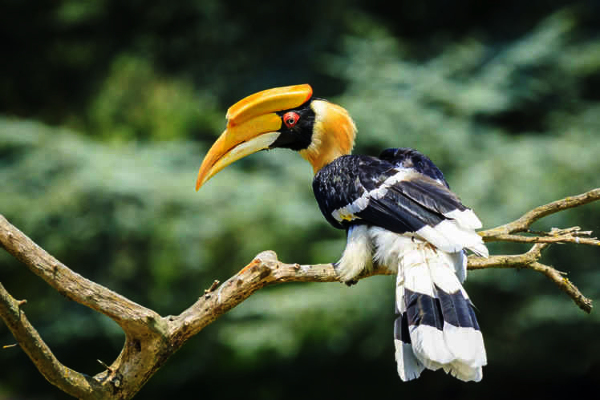Kohima, Nov. 30 (EMN): Nagas have always held the hornbill in high esteem and this, in a way, has been reflected by the Hornbill Festival—the festival of festivals.
Its reverence and symbolism are widely found among Naga tribes, as has been observed by well-known ethnographers like JH Hutton and JP Mills in their writings on the Nagas.
In the absence of any written record among the Naga communities prior to the arrival of American missionaries that introduced western education, one can find a variety of depiction of hornbill birds— presently found in many art-galleries, clothes, wooden crafts etc.
Nagas view nature as a spiritual being and there are certain creatures, landforms and natural objects that are believed to possess a special spiritual meaning. Hornbill is one among such considerations.
It is even said that the practice of mourning the death by the Ao Naga tribe that culminates on the sixth day by taking a bath in a river, is based on the life and behaviour of hornbills. Whereas, there are rituals of some tribes of invoking blessings and abundance “as flocks of hornbills.” It is also found to be used as a metaphor to describe the beauty of women.
The usage of hornbill feather in traditional attires signifies prestige and honour. Wearing a hornbill feather on the headdress (headgears), for instance, implied honour for a Naga warrior during the headhunting days.
According to Sumi Naga folklore, two lovers Kivigho (a boy) and Khauli (a girl) were inseparable lovers and the hornbill’s feather was used “as symbol of never ending love”.
When Eastern Mirror contacted the department of Forest, which looks after wildlife and environment, there was insufficient data with regards to this bird. The government agency had not taken any survey for collection of data from the two forest territories – northern and southern.
An official from the department said, “India is home to nine hornbill species, of which five species are found in Nagaland: the Oriental Pied hornbill, Rufous-necked hornbill, Wreathed hornbill, Brown hornbill and Great hornbill; and three species namely: Oriental Pied hornbill, Rufous-necked hornbill and Brown hornbill can be seen in Nagaland Zoological Park today.”
However, the Great hornbill is said to be endangered.
Further, he maintained that the state zoological park has a good number of Oriental Pied hornbill and stated, “For two consecutive years the Nagaland Zoological Park has been successful in breeding the Oriental Pied hornbill in artificial nesting boxes which is an outstanding achievement.”
He also shared about the initiatives taken by the department for breeding. “This year, after waiting nervously for three months, on July 19 two healthy fledglings came out of their artificial nesting holes; the sex of the fledgling is yet to be confirmed.”
Source: EM
Image Courtesy: Times of India
You may also like
-
India Can’t Afford to Remain Stagnant at this Juncture, Says PM Modi; Asks People to Buy Locally-Made Goods
-
Stolen Artefacts to be Returned to India from Scotland Museums
-
Legendary Singer Lata Mangeshkar Passes Away At the Age of 92
-
Netaji’s Hologram Statue at India Gate
-
10th Century Stone Idol of Goat Head Yogini IllegallyRemoved from A Temple in Lokhari, Banda, UP Being Returned to India
